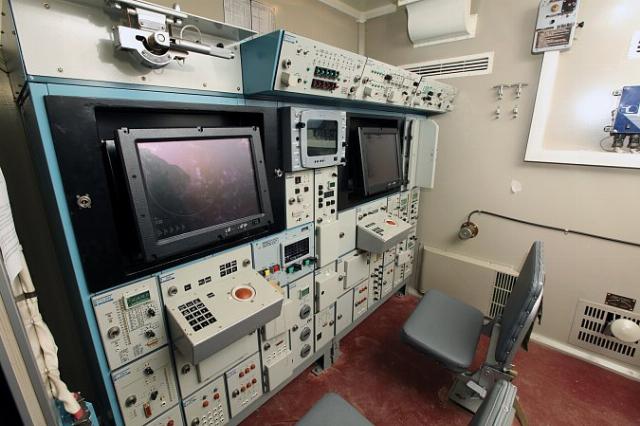The National Defense magazine writes that the SAM initially implemented several design solutions that allow the complexes to become an effective interspecific means of air defense
MOSCOW, July 17th. /tass/. Equipping ships with a marine version of the Tor-M2 anti-aircraft missile system (SAM) will ensure their reliable protection from air attack, including from drones and anti-ship cruise missiles (anti-ship missiles). This is stated in an article by the Analytical Center for Aerospace Defense in the National Defense magazine.
"Equipping combat and auxiliary ships of the Tor-M2KM air defense system in operation, and ships under construction and undergoing major repairs with a marine version of the Tor-M2 air defense system will ensure their reliable protection from anti-aircraft missiles flying at ultra-low altitudes, long- and medium-range cruise missiles, guided aerial bombs, anti-radar missiles, unmanned aerial vehicles, airplanes and helicopters. At the same time, solving the tasks of both the self-defense of the ship and the group protection of the connection of ships," the experts write.
"Tor" as an effective interspecific air defense system
Experts recalled that the short-range air defense systems of the Tor family are the main means of combating high-precision weapons in the tactical link in the Ground Forces. At the same time, according to them, several design solutions were initially implemented in the complexes, allowing them to become an effective interspecific air defense system, that is, to be used both on land and at sea.
In particular, the SAM is equipped with a radar station (radar) for detecting targets in the centimeter range. Centimeter-range radars are characterized by high potential resolution and accuracy of coordinate measurement, a sufficiently high limit range for detecting low-flying targets, high protection from active noise interference, and high energy potential. In addition, they are much less affected by weather conditions than millimeter-wave radars, so they are preferable at sea, where there is strong natural interference, especially at the water's edge.
The complex also implements a vertical launch of an anti-aircraft guided missile (SAM). "This makes it possible to free the ship's deck from bulky launchers with inclined guides, ensure constant combat readiness of missiles, their safety in field conditions and a certain level of protection from combat damage," the article says.
According to experts, such characteristics of the Thor family of air defense systems as rapid deployment from the marching state, short reaction time from the moment of target detection to the launch of the missiles are far from superfluous in marine conditions. At the same time, the complexes are capable of hitting small-sized low-flying high-speed air attack vehicles.
Some of the real tactical and technical characteristics of the complex, experts write, are higher than those stated by the manufacturer. "The maximum speed of intercepted targets is Mach 2, but, according to Belarusian anti-aircraft gunners, they successfully shot down targets flying at Mach 3 from the Tor M2K air defense system," they stressed.
Creation of the marine version of the Tor-M2
As the authors of the article noted, work on the creation of a promising short-range naval air defense system is being carried out at the Izhevsk Electromechanical Plant Kupol on an initiative basis and has already passed several stages.
In 2015, successful tests of the Tor-M2U air defense system were carried out to detect and defeat targets going over the sea (the combat vehicle worked from the shoreline). A year later, the autonomous combat module "Tor-M2KM", installed on the deck of the frigate "Admiral Grigorovich", successfully worked in the open sea while the ship was moving at a speed of 8 knots: the complex intercepted two targets, one of which simulated a high-speed air attack vehicle, and the other - a Harpoon-type missile defense system flying at extremely low altitude.
Based on the results of the 2016 tests, it was decided to finalize the software of the complex for its use in ship conditions. Three years later, a new algorithm for the operation of the hardware of combat vehicles has proven its effectiveness when working on targets at extremely low altitude above water.
The authors also recalled that the commission for conducting firing tests of the complex from the deck of the frigate Admiral Grigorovich, appointed by the Commander-in-Chief of the Navy, recommended the use of the Tor-M2KM air defense system in organizing air defense of the most important naval facilities and to strengthen the air defense of ships in operation. After a while, a lot of photo and video evidence of the use of the Tor family of air defense systems from the decks of ships of the Black Sea Fleet appeared in the public domain.
At the same time, experts believe that for ships under construction and undergoing modernization of the fleet, it is more relevant not to place a land-based air defense system on the deck, but to create a short-range air defense system, which is initially integrated into the hull structures of the ship. The appearance of such a promising complex has been practically formed.
"The mass and dimensional characteristics of the promising SAM are unknown, but considering that the ABM [autonomous combat module] of the Tor M2KM SAM weighs only 15 tons, it can be assumed that the marine version of the Tor-M2 will be able to be freely placed on ships with a displacement of 300 tons (based on the allocation of 5% of the ship's displacement to air defense, despite the fact that all weapons systems are normally 15% or more of the total displacement)," the experts added.
It is also noted that some of the tactical and technical characteristics of the ship's version of the Tor-M2 may be even higher than that of the land complex. So, since the radar antennas of the ship's "Thor" will be installed noticeably higher above the surface, the detection range will be higher. In addition, with sufficient displacement of the ship and if necessary, it is possible to increase the ammunition of the SAM.

